Found on the northern edge of Exmoor, two of my favourite places to visit locally are the picturesque twin villages of Lynton and Lynmouth. As the name suggests, Lynmouth lies at sea level at the confluence of the West Lyn and East Lyn rivers, in a gorge some 700 feet below Lynton. The villages are connected by the Lynton and Lynmouth Cliff Railway, which is a water-powered funicular railway. The steep gradient between the two villages made it hard for people and goods to be moved between them, and in the late 1800s interest arose in building a cliff railway to connect the two.
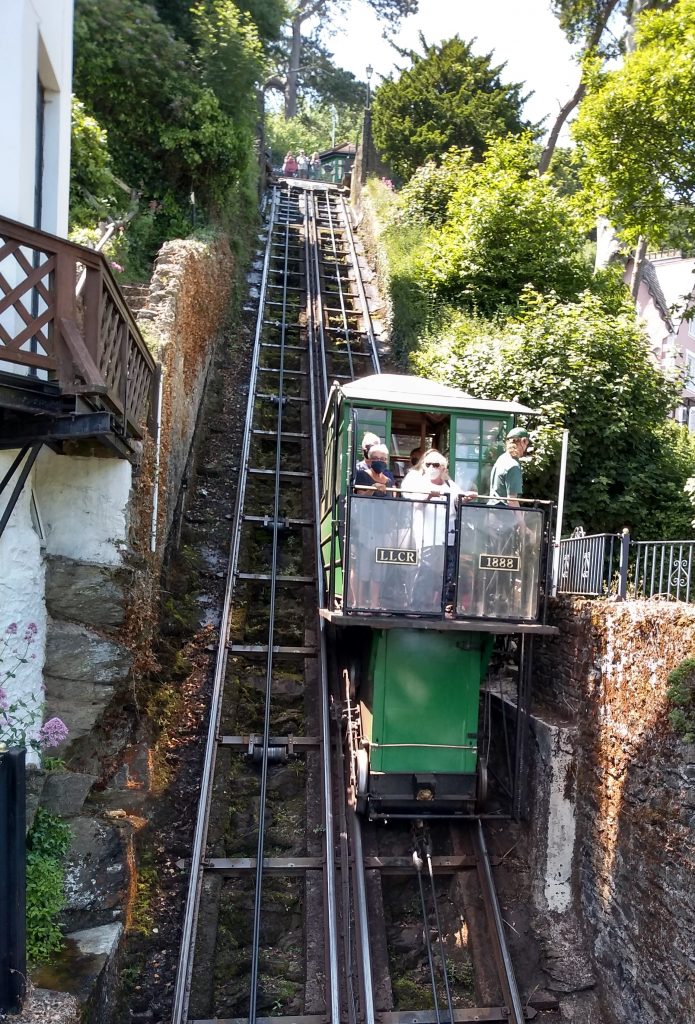
Construction commenced in 1887, and the completed railway was opened on Easter Monday, 1890. It has been in continuous use ever since and is popular with both residents and tourists alike. It is the world’s highest and steepest water-powered cliff railway in use today. Anyone who has braved the steep climb from Lynmouth to Lynton will appreciate what a difference this railway must have made to the residents before the days of the motor car.
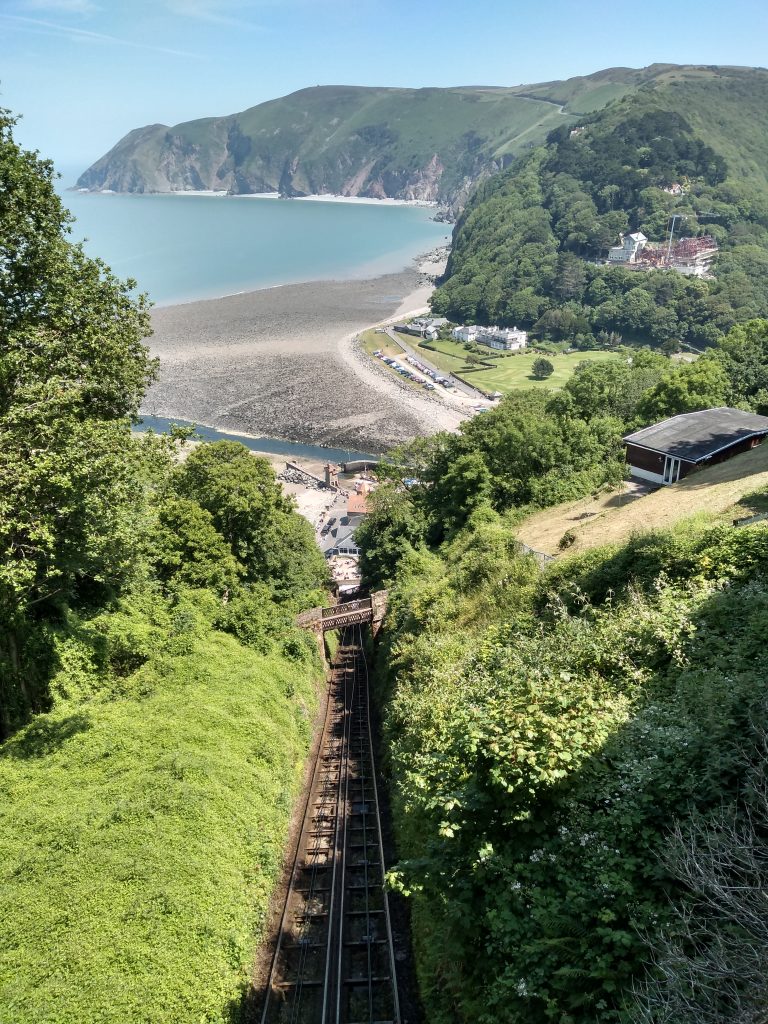
This photograph shows the fantastic view that passengers can enjoy from the cliff railway as it makes its way up the steep incline. Over the years the villages have attracted some famous visitors including Thomas Gainsborough who honeymooned there with his bride, Margaret Burr, in 1746. The poet, Percy Bysshe Shelley, was also fond of the area and wrote his poem “Queen Mab” on a visit in 1812.
The Rhenish Tower
Visitors to Lynmouth may be curious to know more about the Rhenish Tower which is found in the harbour. It is thought the tower was originally built around 1832 when it was believed that saltwater bathing was good for the health. The protection of the tower removed the need for participants to brave the icy waves on the seashore. The original tower had a tar barrel flare on the top to guide mariners into the harbour but in 1850 it was extended to resemble the building seen today. A tank was installed at the top of the tower and this fed saltwater to the “bathhouse”. The tower remained unchanged for many years, apart from the replacement of the tar barrel with an electric light. However, it was totally destroyed in the Lynmouth Flood Disaster of 1952 and rebuilt in 1954. It is thought the name “Rhenish” is derived from similarly shaped towers on the River Rhine.
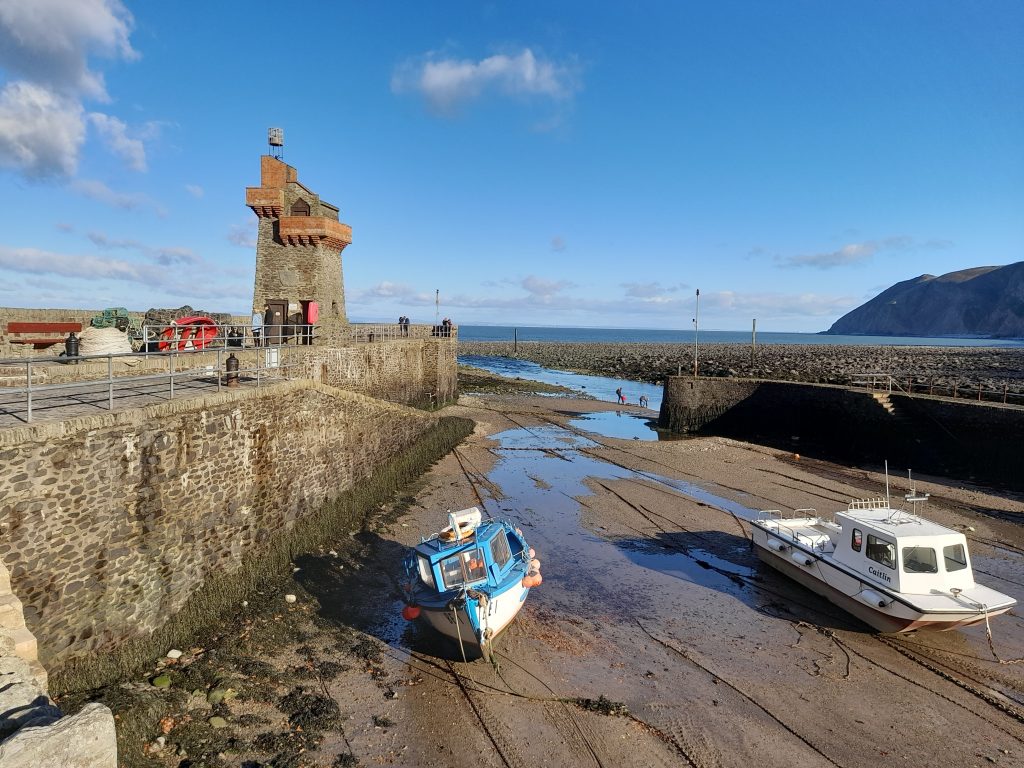
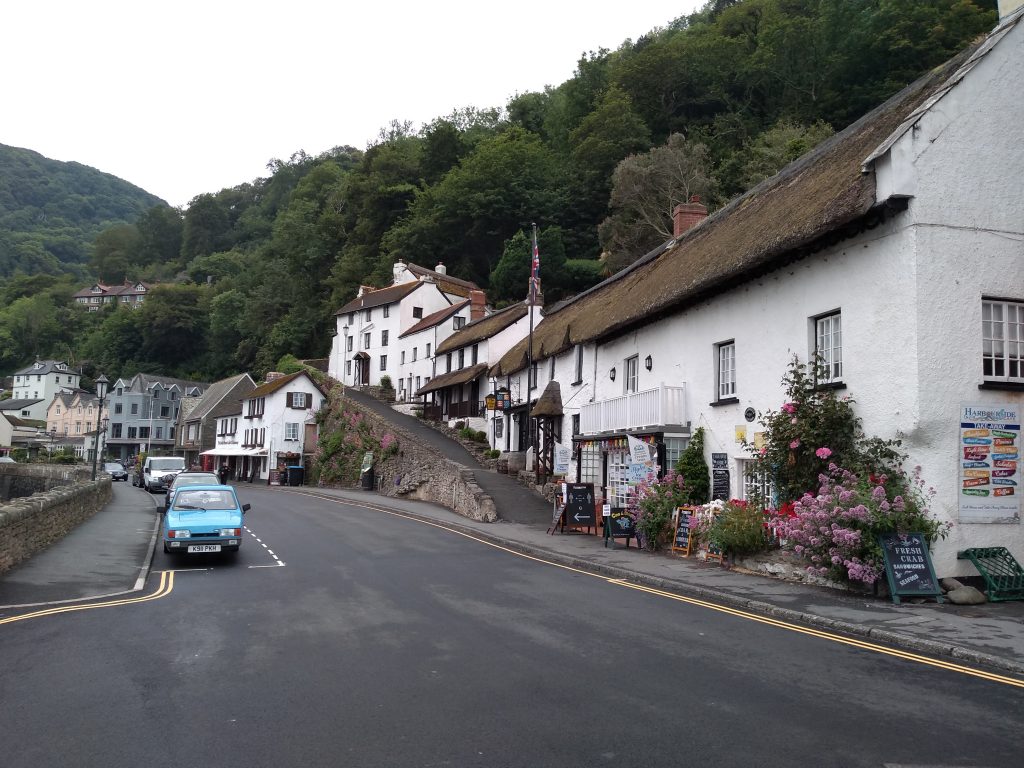
Lynmouth itself has many pleasant little shops, cafes and restaurants. It is worth stopping for a moment to admire The Rising Sun, an ancient 14th-century thatched inn.
Any blog about Lynmouth must record the terrible disaster which struck the village on the night of the 15 August 1952. The event has become known as the Lynmouth Flood Disaster in which 34 poor souls lost their lives. In Anglo-Saxon times the name Lynmouth meant “town on the torrent” and on that sad night, this was certainly true.
Between the 15th and 16th of August in that fateful year, an incredible nine inches of rain fell on the plateau of Exmoor, most of it between 7 pm and midnight. It is estimated that this resulted in 90 million tons of water cascading down the steep narrow valleys of the twin rivers towards the small harbour village. The water was heavily laden with fallen trees and other debris, and the series of bridges along the river formed dams which, in due course gave way, sending a huge wave of water towards the village.
More than 100 buildings were destroyed along with 28 of the 31 bridges, and 30 cars were washed out to sea. 420 people were made homeless in a matter of hours. The cottages in the small hamlet of Middlesham were never rebuilt and there is a memorial garden on the site.
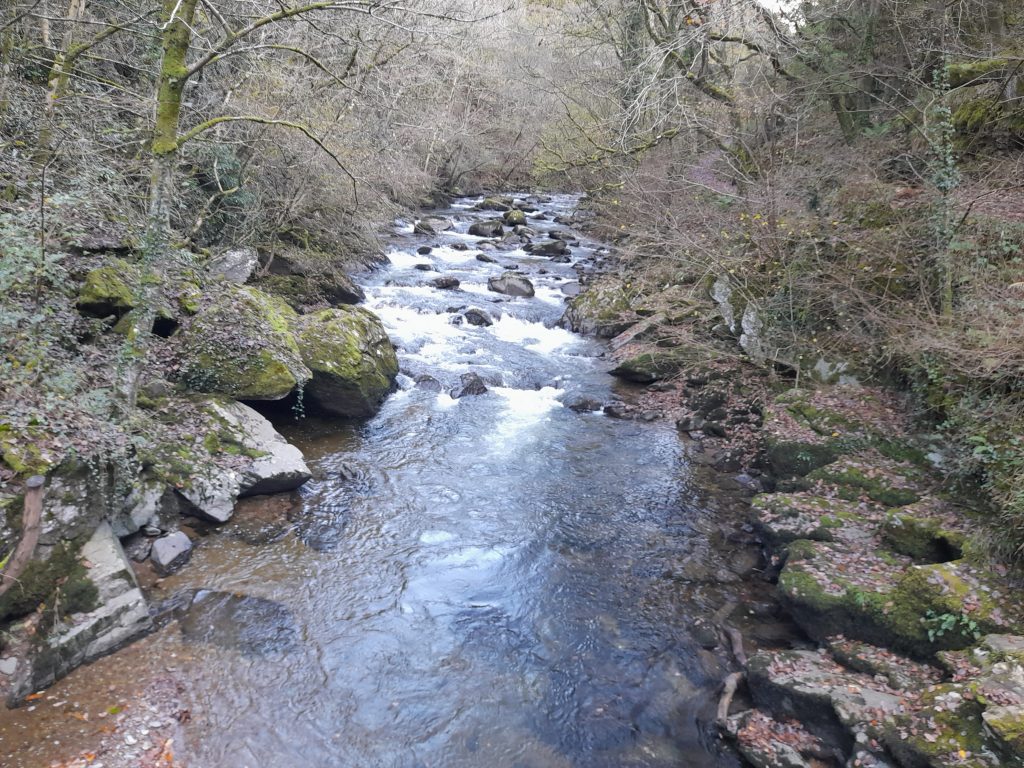
From Lynmouth, it is possible to walk alongside the river to Watersmeet. It is a lovely walk and one of my favourites. The path is stony with a few steep inclines so walking boots are recommended as it can be quite slippery. Black and white dippers can often be seen on the rocks in the centre of the river. They are unmistakable with their heads “dipping” up and down. A birdwatcher recently told me that their habit is to enter deep, fast-flowing water and walk upstream to catch food. It is unusual to see birds do this. Other wildlife which can be seen on this walk include grey wagtails, herons, deer and, if you are very lucky, otters, though I have never seen one.
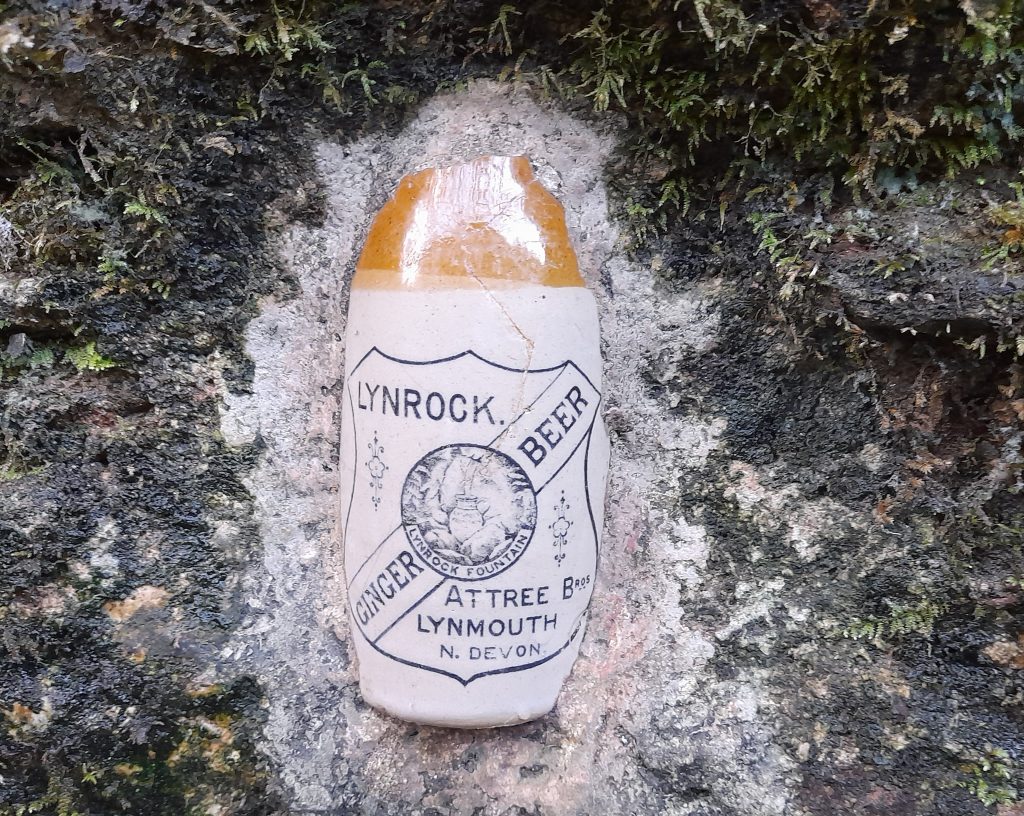
The path meanders past the site of the Lynrock Mineral Factory. The factory, which was built around a natural spring, opened in 1911 and sold bottled mineral water and ginger beer. It was owned by the Attree brothers who lived at Myrtleberry, a lovely property just up the river. The factory closed in 1939 due to a lack of demand, and the abandoned building was washed away in the 1952 flood. There is a plaque marking the spot where it stood and the fireplace can still be seen. Set into the rocks is an old ginger beer bottle.
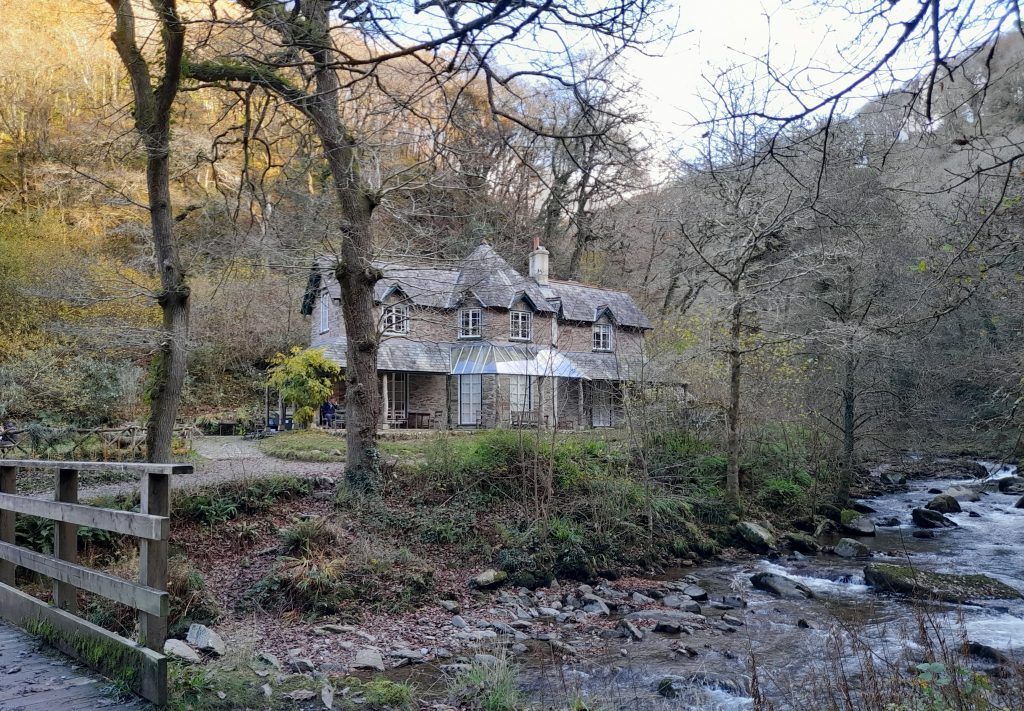
At Watersmeet, the waterfalls where the East Lyn River and the Hoar Oak Water meet are spectacular at any time of year, but particularly after heavy rain. Watersmeet House is now owned by the National Trust and a welcome stop for refreshment and perhaps a Devon cream tea. It was built in 1832 by the Rev, Walter Halliday as a fishing lodge.
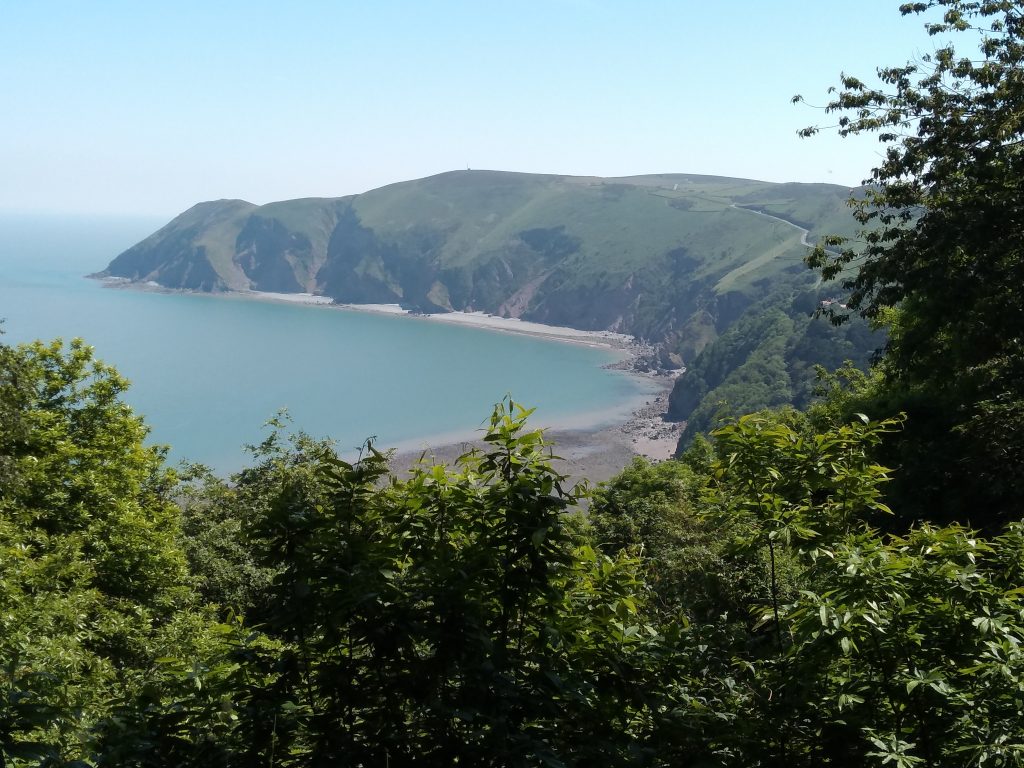
On returning to Lynmouth, it is a short trip on the cliff railway to Lynton which is also well worth a visit. The view along the coastline from the top is outstanding. There are a couple of walks from Lynton, one alongside the Town Hall which ascends Hollerday Hill and leads to the Valley of the Rocks. However, an alternative route to this popular valley can be found not far from the cliff railway.
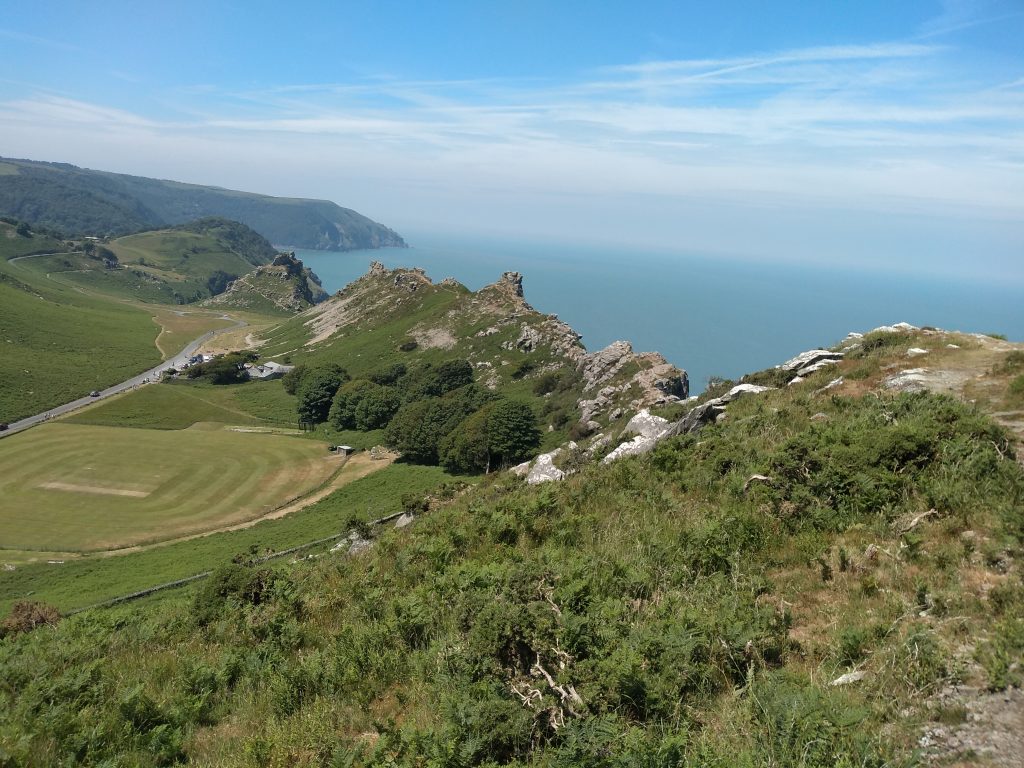
This is the view of the Valley of the Rocks from the Hollerday Hill route.
With scenery like this, a visit to Lynton and Lynmouth is always enjoyable.
0 Comments